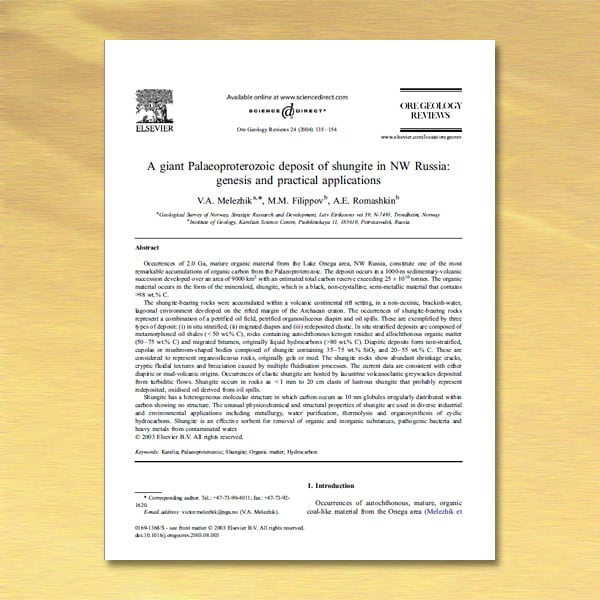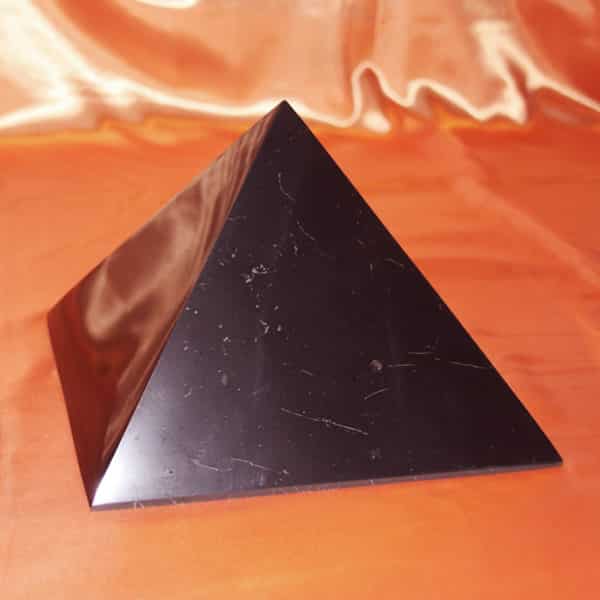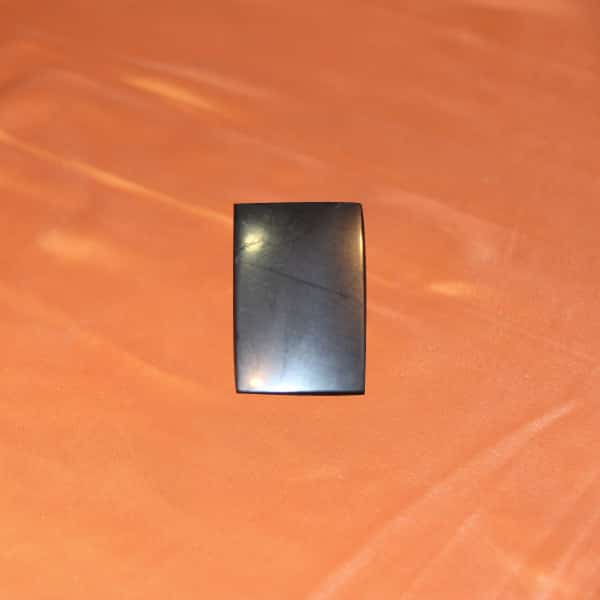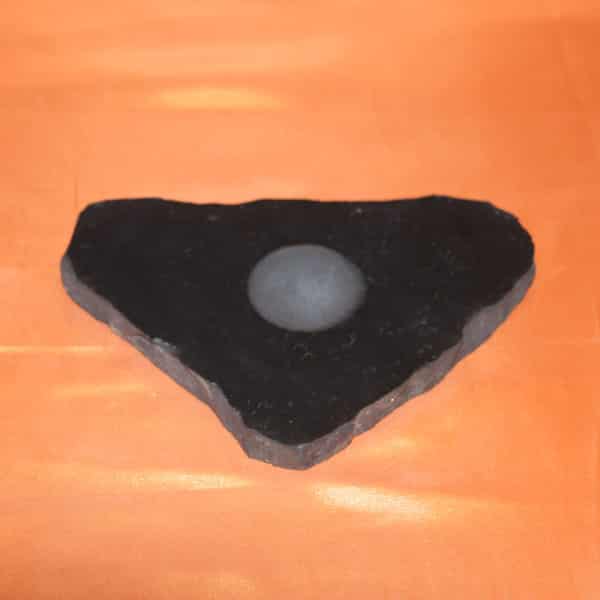Description
Occurrences of 2.0 Ga, mature organic material from the Lake Onega area, NW Russia, constitute one of the most remarkable accumulations of organic carbon from the Palaeoproterozoic. The deposit occurs in a 1000-m sedimentary-volcanic succession developed over an area of 9000 km2 with an estimated total carbon reserve exceeding 25 x 1010 tonnes. The organic material occurs in the form of the mineraloid, shungite, which is a black, non-crystalline, semi-metallic material that contains >98 wt.% C.
The shungite-bearing rocks were accumulated within a volcanic continental rift setting, in a non-euxinic, brackish-water, lagoonal environment developed on the rifted margin of the Archaean craton. The occurrences of shungite-bearing rocks represent a combination of a petrified oil field, petrified organosiliceous diapirs and oil spills. These are exemplified by three types of deposit: (i) in situ stratified, (ii) migrated diapirs and (iii) redeposited clastic. In situ stratified deposits are composed of metamorphosed oil shales ( < 50 wt.% C), rocks containing autochthonous kerogen residue and allochthonous organic matter (50–75 wt.% C) and migrated bitumen, originally liquid hydrocarbons (>80 wt.% C). Diapiric deposits form non-stratified, cupolas or mushroom-shaped bodies composed of shungite containing 35–75 wt.% SiO2 and 20–55 wt.% C. These are considered to represent organosiliceous rocks, originally gels or mud. The shungite rocks show abundant shrinkage cracks, cryptic fluidal textures and brecciation caused by multiple fluidisation processes. The current data are consistent with either diapiric or mud-volcanic origins. Occurrences of clastic shungite are hosted by lacustrine volcanoclastic greywackes deposited from turbiditic flows. Shungite occurs in rocks as < 1 mm to 20 cm clasts of lustrous shungite that probably represent redeposited, oxidised oil derived from oil spills.
Shungite has a heterogeneous molecular structure in which carbon occurs as 10 nm globules irregularly distributed within carbon showing no structure. The unusual physicochemical and structural properties of shungite are used in diverse industrial and environmental applications including metallurgy, water purification, thermolysis and organosynthesis of cyclic hydrocarbons. Shungite is an effective sorbent for removal of organic and inorganic substances, pathogenic bacteria and heavy metals from contaminated water.
© 2003 Elsevier B.V. All rights reserved.







Avis
Il n’y a pas encore d’avis.